Chefs, scientists, and agricultural trailblazers are taking a six-legged approach to the future of food
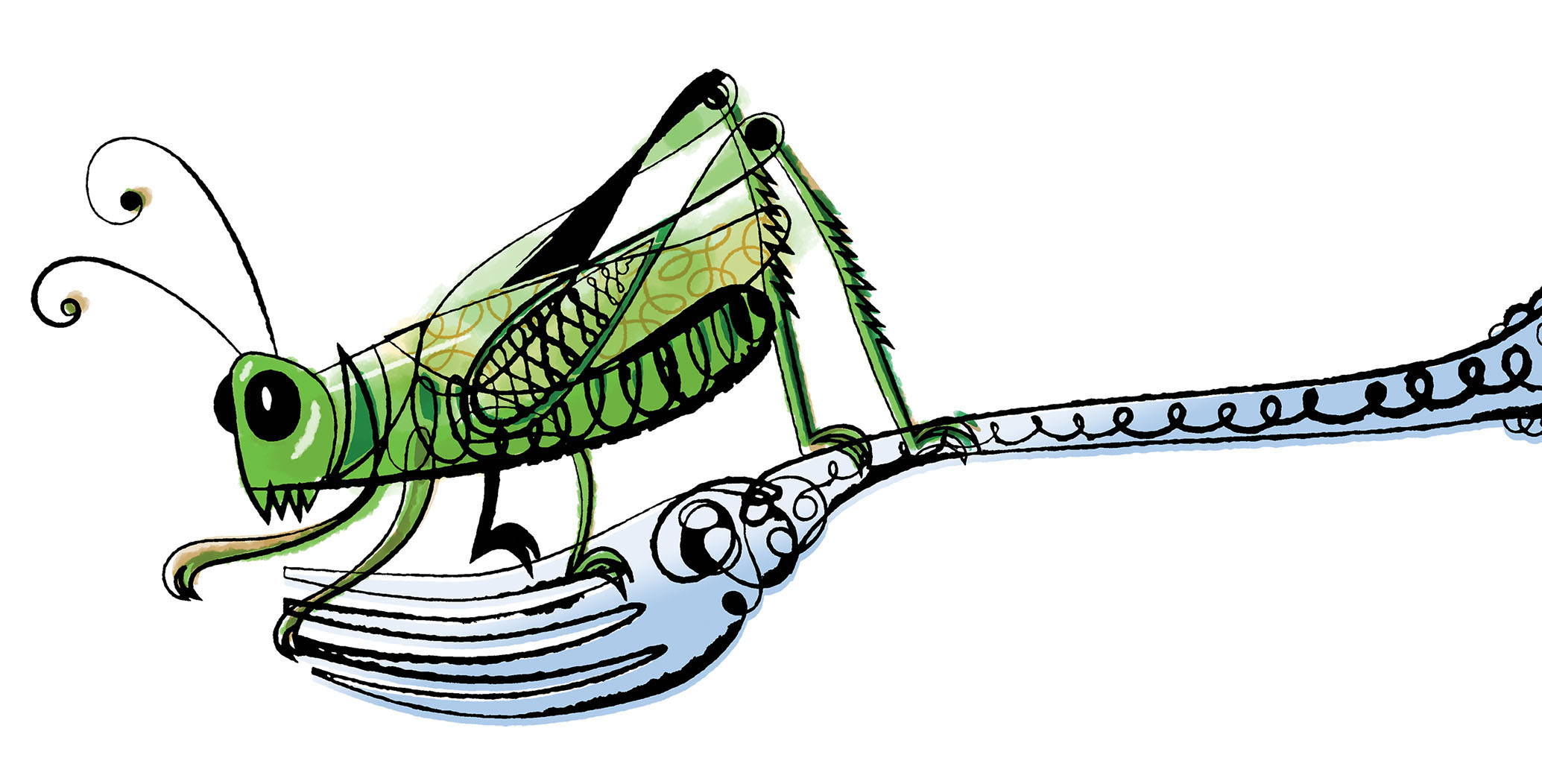
Gateway Bugs

Eli Halpern wandered the congested avenues of Bangkok with a growing hunger in his gut and a willingness to try anything. It was a humid night in 2012, and the visiting American martial artist traipsed between the mobile food peddlers and street stalls venting billowing clouds of wok smoke. Free from his lessons in Muay Thai, Halpern sidled up to one vendor and encountered his first edible creepy crawly. Served on a skewer, barbecued scorpion was mainly sold to gawking tourists as a gimmick-on-a-stick. Nonetheless, Halpern found the offering both delicious—he describes it as “a combination of fried chicken and a poached egg”—and full of promise.
“I thought it would be really interesting to create a company for a market that doesn’t exist and a product that doesn’t really exist, and turn nothing into something,” he says. Nine years later, that epiphany became the genesis of Golden Cricket, an Austin company specializing in horchata-flavored protein powder built around insects.

Ryan Samson and Daniel Brooks, co-owners of Chapulín Cantina
After experimenting with his home kitchen mixer to make the ideal blend, Halpern found a cricket-fueled combination that landed his products on store shelves and in specialty gyms around the capital city. So far, reception has been overwhelmingly positive, and he plans to unveil a litany of other bug-based products in the future.
While the idea of eating these kinds of critters may seem odd—and maybe even revolting—Golden Cricket is just one of many companies expanding the consumer market for insects in the U.S. According to food scientists at the groundbreaking Center for Environmental Sustainability Through Insect Farming based at Texas A&M University, insects have the potential to become a major player in our nutrition over the next few decades—a trend that is not without precedence.
Humans have consumed insects for thousands of years, and 80% of countries—from Asia to South America—have embraced the practice. Closer to home, Mexican cuisine utilizes a wide variety of insects, and Texas’ proximity to the country makes it a prime spot for more insect-heavy offerings when dining out. That pipeline of convenient sourcing is now bearing fruit across the state, with Texas spearheading the bug revolution in high-profile restaurants like Xochi in Houston and Don Artemio in Fort Worth.
Cultural norms remain the sticking points in Western countries and still present a steep hurdle to the nascent industry. Yet scientists and activists are working to upend the stigma around insects for some very important reasons: mitigating the effects of climate change, improving animal health, and battling food insecurity.
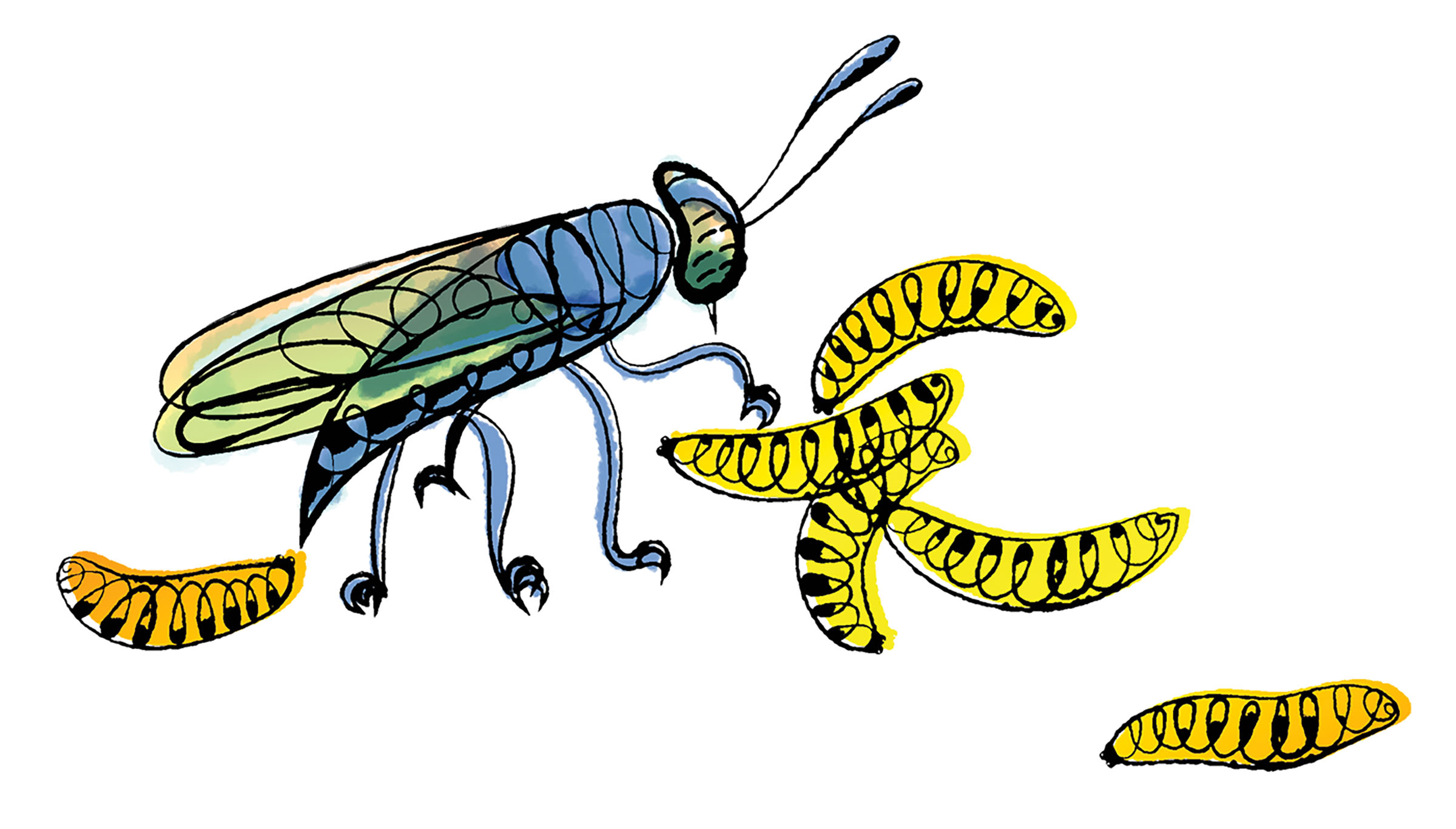
Black Soldier Fly Hermetia illucens
Proof of the detrimental effects of widespread animal agriculture has been evident for decades. It has caused widespread deforestation globally, released copious amounts of methane, and harmed the animals it most values. Every year, animal agriculture is responsible for around 15% of global carbon emissions and takes up over a third of the world’s habitable land area. In Texas, farms and ranches combined make up over 80% of the state’s land, according to the Texas Farm Bureau. And as the world looks to more sustainable methods to feed the growing population—the United Nations predicts that by 2050 the human population will reach 9.7 billion, up from the current 8 billion—insect protein shows signs of being a solution.

The restaurant’s Chespirito margarita with a chapulín salt rim

Tlayudas topped with garlic-lime grasshoppers
“Insects are incredibly efficient,” says Robert Nathan Allen, co-founder and current board member of the North American Coalition for Insect Agriculture. “You can have a nutrient-dense ingredient without over-processing, compared to something like a plant-based protein that requires a lot of highly processed ingredients.”
To Allen’s point, insects pack a nutritional punch. A pound of cricket powder—created by dehydrating and crushing up the insects—contains just under 300 grams of protein. Compare that to a pound of steak, which provides only a third of that. Additionally, that same pound of cricket powder only takes 1.5 pounds of feed to cultivate—a fraction of what cattle in feedlots require.
Advocates for this dietary alternative say they aren’t looking to swap burgers for bugs, but rather to provide more opportunities for a less resource-intensive form of protein and amino acids.
“They have a good amount of the proteins that we need, the micronutrients that we need, and fiber,” Allen says. “And we’re just scratching the surface of all the ways they’re beneficial.”
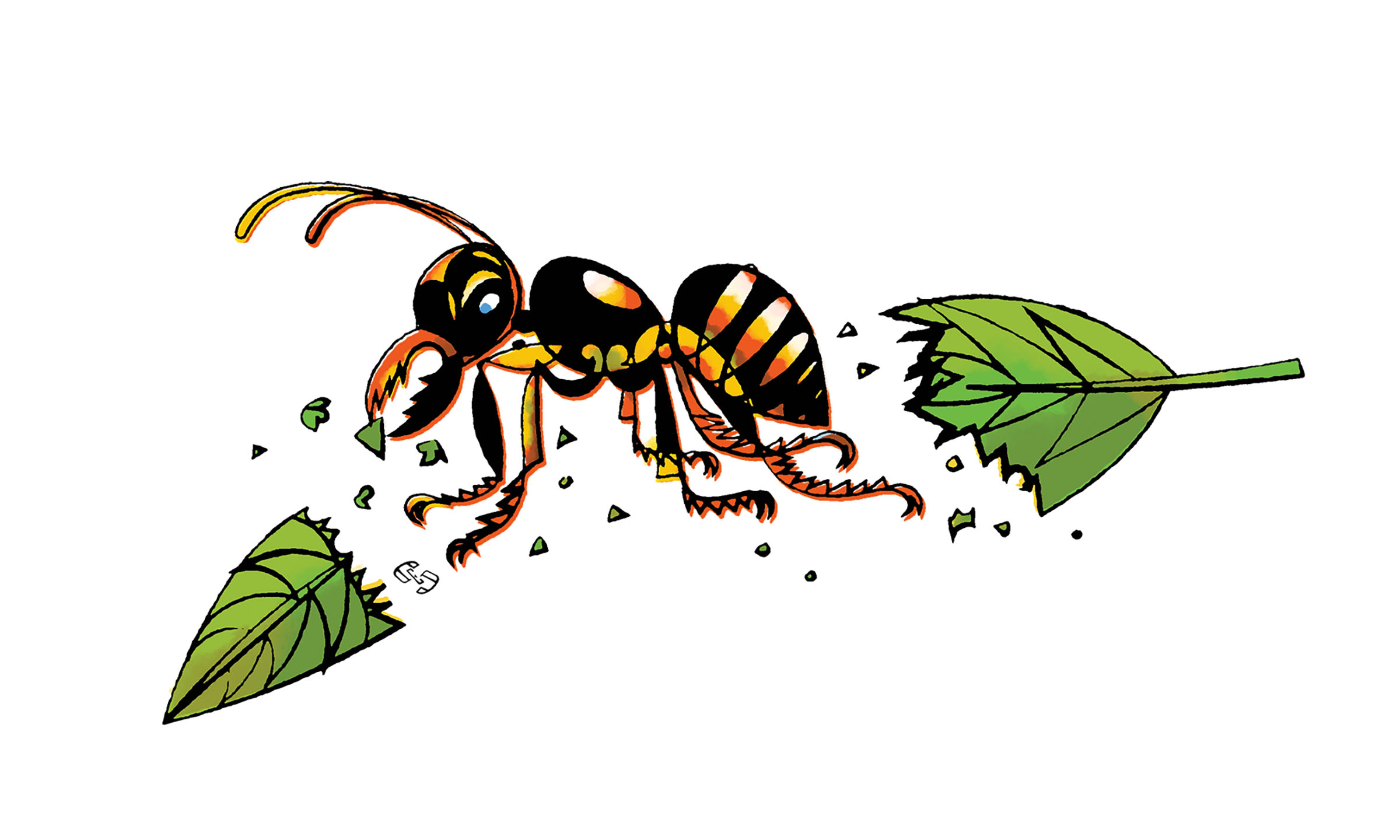
Chicatanas Leafcutter ant Atta mexicana

Don Artemio in Fort Worth
Seated on her dad’s lap at the bar of Austin’s Chapulín Cantina, Maggie, age 16 months, reaches for the bowl of guacamole sitting on the counter. Whipped into a jade dome, the appetizer is crowned with a salty, crunchy garnish that sets it apart from any other version in town. As the name of the South Congress eatery alludes to, chapulines, or grasshoppers, are a traditional part of the Oaxacan diet, and chefs Ryan Samson and Daniel Brooks are eager to showcase the delicacy. Roasted in garlic and lime, the Oaxaca-sourced product is sprinkled onto the mashed Haas avocados for a punch of extra umami and texture. And it’s proving irresistible to little Maggie, who’s reaching out for a repeat taste test. Her front teeth have just come in earlier in the week, and she’s putting them to good use. Looking over at her father, bug-eating advocate Allen, she smiles and taps her fingertips together in the American Sign Language sign for “more.”
Along with that addictive guacamole, Chapulín Cantina serves the insects atop dishes like its moles, tostadas, and signature tlayudas, which are large crunchy tortillas covered in rich melted quesillo, crisp cabbage, avocado purée, and other veggies. It’s a dish manager Joshua Saux says diners like to call “Mexican pizza.” And for adventurous eaters without preconceived notions about gastronomic norms—like Maggie—the orthopteran additions prove an untapped resource for intriguing culinary possibilities.
Chapulín Cantina is just one of many restaurants bringing Mexico’s storied lineage with insect fare north of the border. Long playing a pivotal role in the country’s cuisine, insects were first brought to prominence because of their prevalence on agave plants and in Oaxacan corn fields. Texas’ close geographic and historic kinship to Mexico has made it a natural successor in the progression of the practice.
“Texans are understanding more of authentic Mexican cuisine,” says Adrián Burciaga, co-owner and manager of Don Artemio, a 2023 James Beard finalist specializing in Northeast Mexican cuisine. “You can see that by great restaurants opening at the highest level across the state. You can now find different concepts from small entrepreneurs who are trying to put a mark on what is authentic Mexican cuisine.”
Formerly the manager of the restaurant at the Modern Art Museum of Fort Worth, Burciaga convinced his friend, chef Juan Ramón Cárdenas, to refashion his popular Saltillo, Mexico, chophouse in North Texas in 2020. Although opened during the precarious days of the pandemic, Don Artemio made immediate waves with critics and Cowtown foodies with offerings like its silky guacamole featuring toasted chapulines that are seasoned in-house and served alongside heirloom blue corn tortillas.
“The tortillas we use are made by hand, so the softness of them, combined with the creaminess of the guacamole, and the crunchy part of the grasshopper—it makes just a fabulous bite,” Burciaga says.
More than 250 miles south on Interstate 45, chef Hugo Ortega has taken a similar approach when it comes to largely misunderstood ingredients like chicatanas (a species of ant), chapulines, and maguey worms. The first Mexican-born chef to earn a James Beard Award, in 2017, Ortega has created a Houston mini dynasty with five restaurants (three of which made the Houston Chronicle’s vaunted “Top 100 Restaurants” list in 2023), as well as one in his hometown in Oaxaca. But insects are a particular focus of his downtown restaurant Xochi, where the chef showcases them in dishes like queso de rancho, which incorporates house-made queso de cincho cheese, huaxmole rojo sauce, and a trio of insects.

Grasshoppers are the surprise accent to a mezcal cocktail
All of Ortega’s dishes are a vestige of his grandmother’s lessons in the kitchen starting when he was 9. For example, mole made with chicatanas and smoked pasilla chiles, and an appetizer of escamoles, or ant eggs—an off-menu specialty that’s often compared to a terrestrial version of caviar. The buoyant little grains are contrasted against a verdant canopy of sorrel, purslane, and salsa albañil. Although the ants, and especially their eggs, are rare and difficult to source, Ortega has fond memories of his grandfather regaling him with stories about the location of nests in his village on the border between Oaxaca and Puebla.
“Mexican cuisine is one of the most complete cuisines in the world,” Ortega says. “It gave so much to the world in high-quality ingredients like tomatoes and avocados, vanilla, peppers. So, there is this richness that’s incredibly important in today’s world.”
Dishes utilizing the complexity of insects have become top sellers at Ortega’s restaurants like Xochi and Hugo’s in Montrose. But before they reached that kind of distinction in Texas, the ingredients were pre-Hispanic staples found throughout Mexico. Ortega says the location of escamole nests in places like Hidalgo, Puebla, and Tlaxcala have been passed down for hundreds of years.
Entomophagy, the official term for insect-eating, extends far beyond the geographic boundaries of North and South America. The earliest evidence for this kind of dietary norm dates back 10,000 years, as it required little effort and no more equipment than opposable thumbs for humans and our predecessors. That only began to change during colonial times, when Europeans deemed the practice “dirty,” likely because insects are much smaller and sparser further from the equator.
“Part of it was a shift away from the equator, part of it was that colonial mindset, and then a lot of it was that once you’re growing food and domesticating animals, then insects start to become a pest instead of a resource,” Allen says.
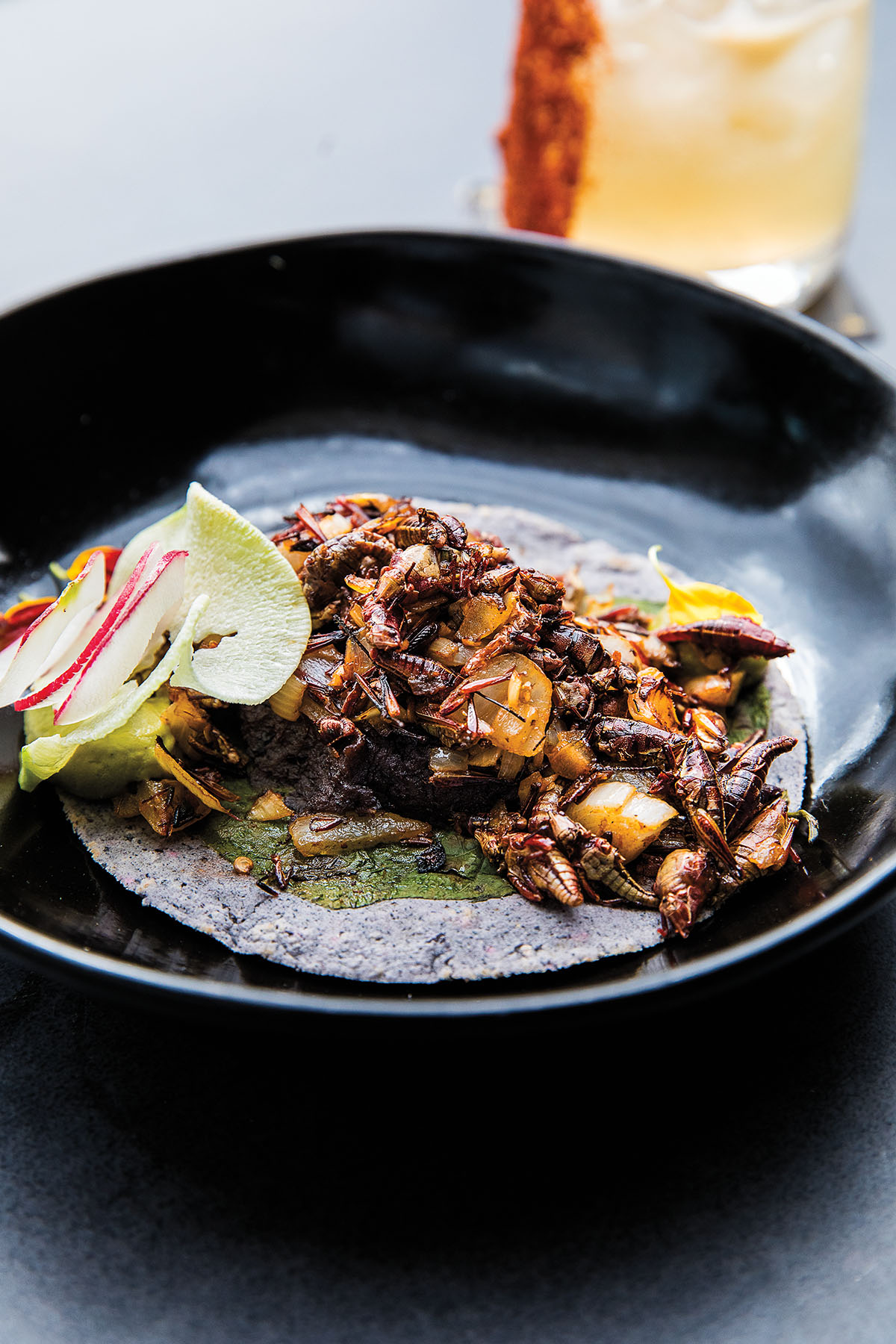
Insects are the star protein on blue corn tacos at Xochi.

Chef Hugo Ortega in Houston
If the future promises more bugs, most consumers won’t even notice. “Discreet” is the crucial buzzword for an industry on the rise, according to Jeff Tomberlin, director of Texas A&M’s Center for Environmental Sustainability Through Insect Farming. That means ingredients like penne pasta given some added oomph of iron and zinc courtesy of cricket powder or its flour-like equivalent folded into cookie dough and other baked goods.
In the past two years, the Texas A&M center secured funding from the National Science Foundation and industry partnerships with companies like Mars Inc. and Tyson Foods to expand research and begin incorporating insect farming into the food and feed systems. Edible insect production is already a multibillion-dollar industry. And with mainstream snacking, pet care, and supermarket meat brands joining the craze, it’s expected to double or triple within the decade.
The approach of the center—whose researchers are based at A&M, Indiana University-Purdue University Indianapolis, and Mississippi State University—is multifaceted. First, it aims to use insect protein as feed for farm animals, while also making insect ingredients more feasible for widespread consumption at the dinner table. To achieve the latter, these insect innovators understand they’ll have to upend some firmly ingrained attitudes about what should and shouldn’t be put into our bodies.
Protein Shake-Up
See how powdered insects measure up against other nutritional powerhouses
![]()
Cricket powder
300 g/lb
![]()
Plant-based
protein powder
280 g/lb
![]()
Egg white protein powder
380 g/lb
![]()
Whey protein powder
320 g/lb
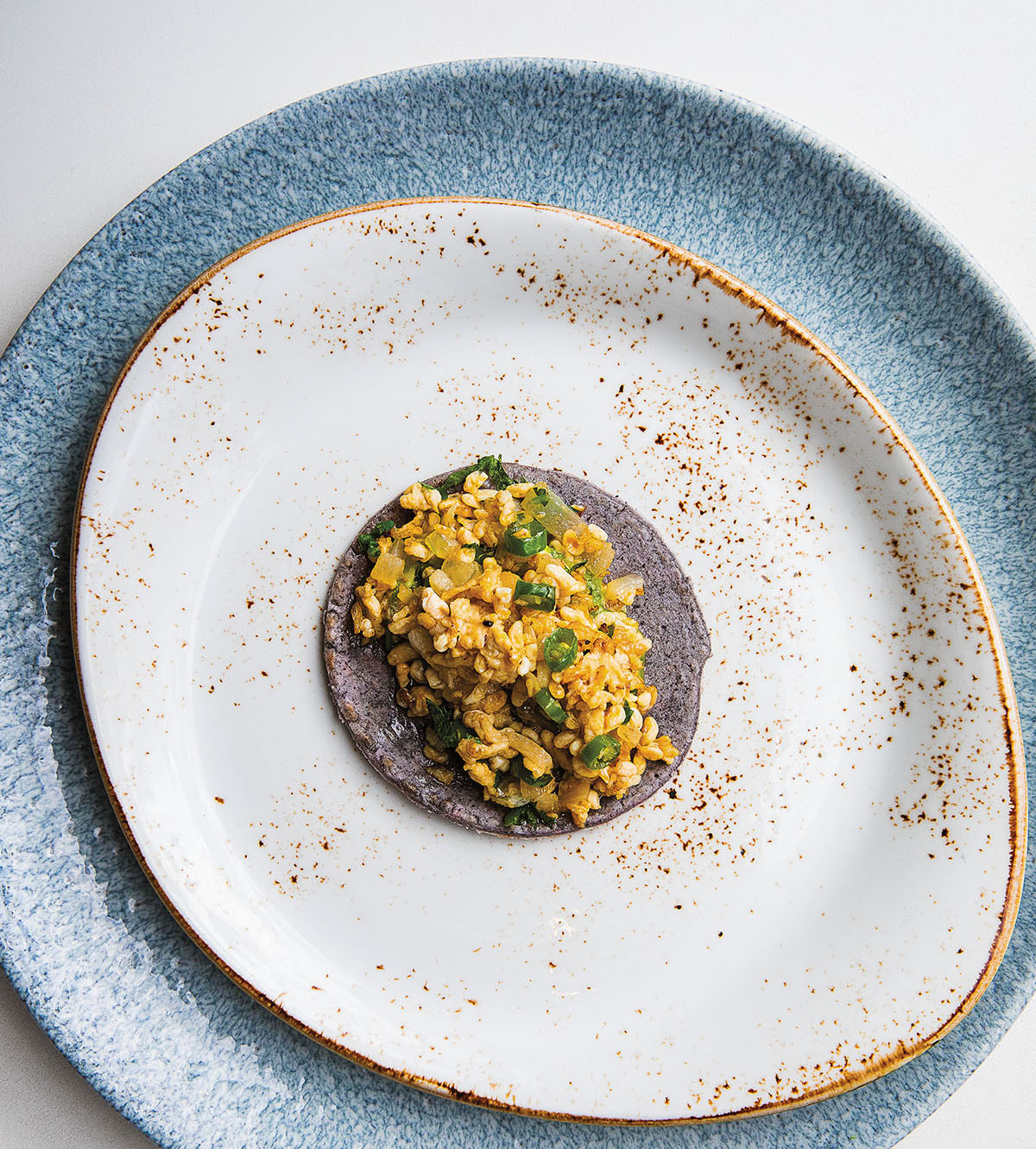
Xochi showcases escamoles, or ant eggs
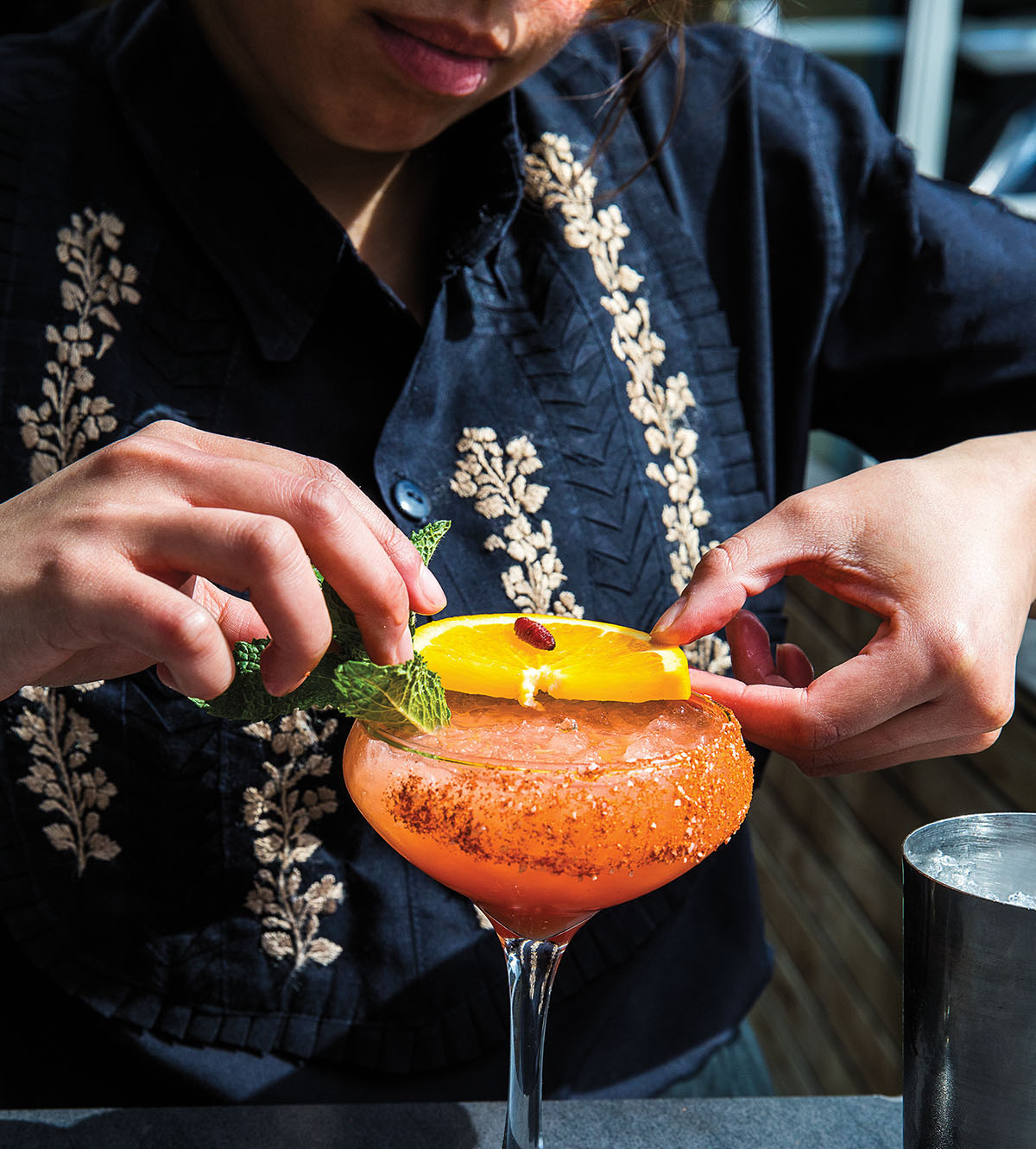
The Mezcalini cocktail with gusano salt
“There has been a lot of underestimation of edible insects because of the disgust factor—because people get grossed out by the idea of eating insects,” says Tiffany S. Legendre, an associate professor at the University of Houston’s Conrad N. Hilton College of Global Hospitality Leadership. “The idea of eating insects is so gross for many, especially in America, that people don’t want to listen.”
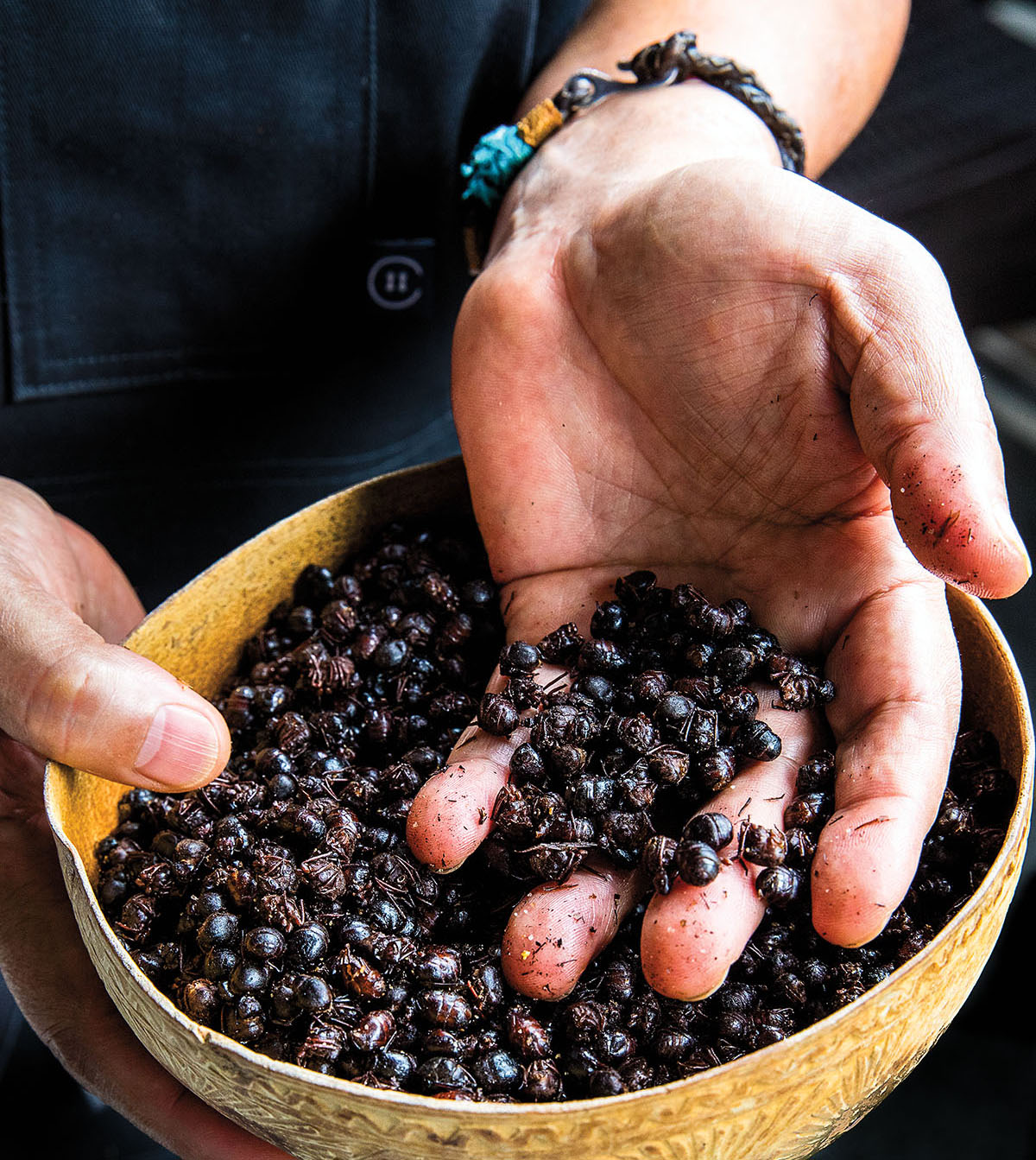
Chef Ortega shows off some chicatanas
Chef Ortega shows off some chicatanas
Insect farming’s accessibility lies in its minimal infrastructure. The farm facilities—in Texas, there are about 10—are often made up of layers of stackable cricket bins that don’t require much land. Less water is necessary because they hydrate through the foods they eat, which makes them especially viable in hot and drought-stricken climates. And in some modern facilities, they ingest pre-consumer waste—think vegetables and other foods that were deemed too ugly or damaged to sell in a grocery store. That reduces the amount of methane given off by rotting produce, rather than requiring costly and resource-intensive feed.
Tomberlin primarily studies the black soldier fly, a fly native to South and Central America, which is used in experimental provisions for chicken, fish, and even pets. In modern insect-farm facilities, insects like black soldier flies condense their food’s nutrients into tiny forms, an ability they developed over time to accommodate the dietary needs of the birds and lizards that feed on them. “They’re nature’s decomposers,” Allen says. “Insects are a way for us to take low-value materials and turn them into high-value nutrients.”
In addition to animal feed, farmers harvest the flies’ frass, or bits of exoskeleton and insect waste, as a nitrogen-rich fertilizer for plants. Factoring in their ability to reproduce quickly, these same farmers can cycle through 20 generations in a single year.
“What I love about this system is anyone in the world can do it. Anyone,” Tomberlin says. “That means a lot to me because we live in a world where resources are limited, and this can be an opportunity for those who do not have them. It can change lives, it can change communities, it can change governments, it can change nations for
the better.”
Adding insect ingredients to traditional feed has also yielded improvements in animal health due to the insects’ protein and amino acids. That leads to improved nutrition for the humans who eat animals fed with insects, according to Tomberlin.
Aside from whole bugs served up at destination-worthy restaurants, foods that disguise their insect-based contents are available to the public in stores and online. Aspire Food Group, founded in 2013, operated a full-service cricket farm and production facility in Austin until a recent move to Ontario, Canada. There, they produce their Exo brand goods like protein powder, bars, and baking mixes, which they distribute online.
If the leap from beef to bug seems like a culinary bridge too far, consider sushi. Today, it’s so ubiquitous that it lines supermarket and convenience store shelves. But back in the 1960s and ’70s, consuming raw fish was regarded as peculiar. “Sushi 40 years ago was exotic, now it’s on every corner,” Tomberlin says. “If we think about lobster as a prisoners’ food, now it’s an expensive item to eat. It just takes time.”
No matter how many years it takes, it’s not too much of a stretch to picture cricket energy bars at the neighborhood grocery store, the eggs in your fridge forged on a diet of mealworms, or ant eggs as the pièce de résistance atop a Michelin-starred meal. Chances are, we’re all going to be unlikely bug converts. Not only does this once-unthinkable future promise inventive ways of dining and healthier means of raising our food—it just might save the world.
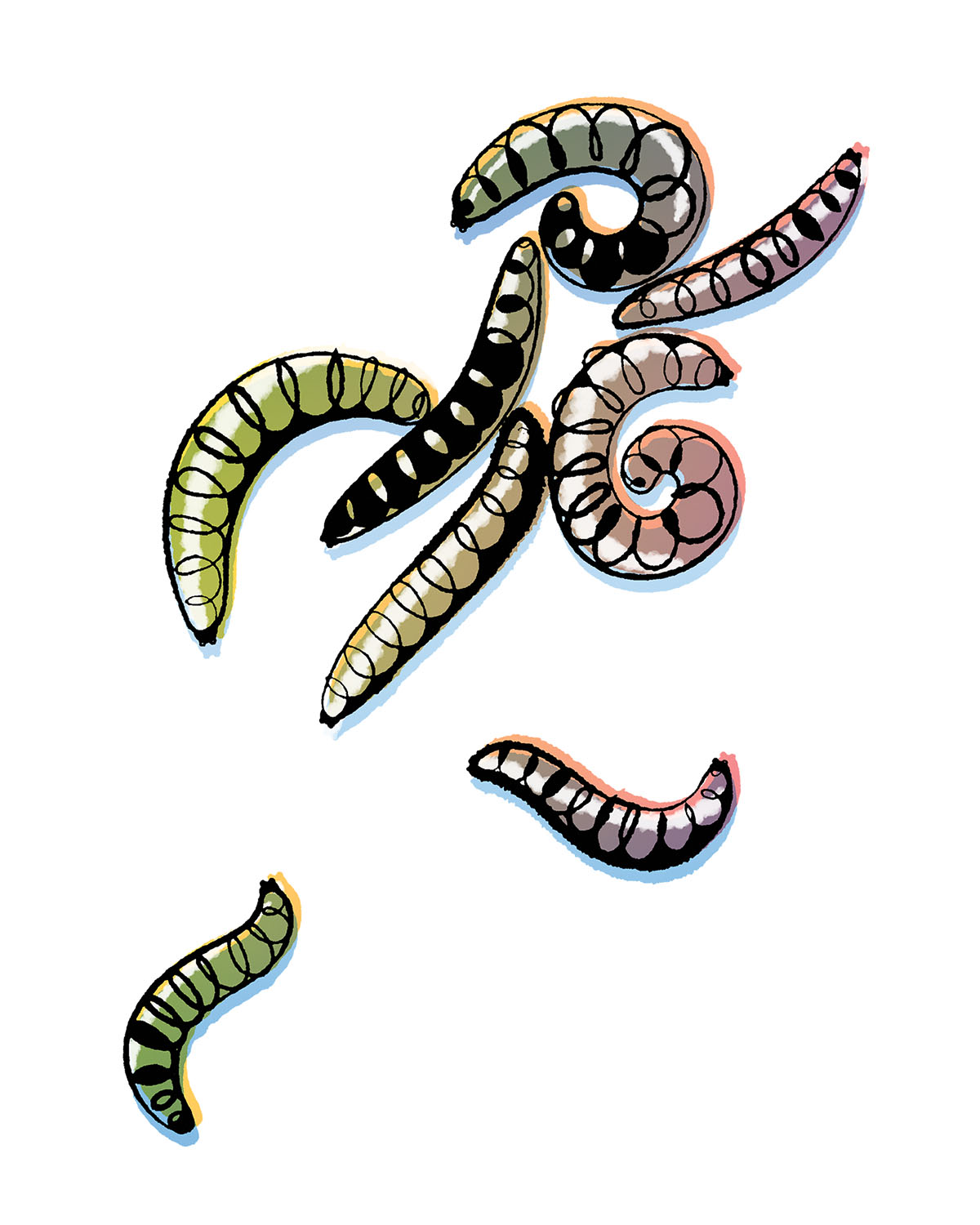
Maguey Worms Larvae of Comadia redtenbacheri moth
Hopping Restaurants
Xochi
Some of chef Hugo Ortega’s most popular traditional Oaxacan dishes highlight insects like chapulines, chicatanas, and maguey worms. 1777 Walker St., Houston. 713-400-3330; xochihouston.com
Street to Kitchen
A Thai favorite in Houston, the eatery regularly rolls out specials like fried crickets with makrut lime leaves and watermelon. 3401 Harrisburg Blvd., Suite G, Houston. 281-501-3435; streettokitchen.com
Chapulín Cantina
The namesake insect of the Austin restaurant takes center stage as a topping or optional filling in almost all of its dishes. 1610 S. Congress Ave., Austin. 512-441-7672; chapulincantina.com
Don Artemio
Chef Juan Ramón Cárdenas combines a traditional approach with new ideas, like using ground-up chapulines to salt cocktail rims. 3268 W. Seventh St., Fort Worth. 817-470-1439; donartemio.us
Cuishe Cocina Mexicana
This interior Mexican restaurant boasts the rare escamoles—ant eggs known as the “caviar of Mexico”—as just one of its insect-heavy offerings. 119 Heiman St. and 115 N. Loop 1604 East, Suite 1118, San Antonio. cuishemx.com
Taco Shop
Try a chapulín tostada or chocolate-covered chicatanas at this El Paso joint. 1920 N. Zaragoza Road, Suite 114, El Paso. 915-800-1011; awfoodservice.com








